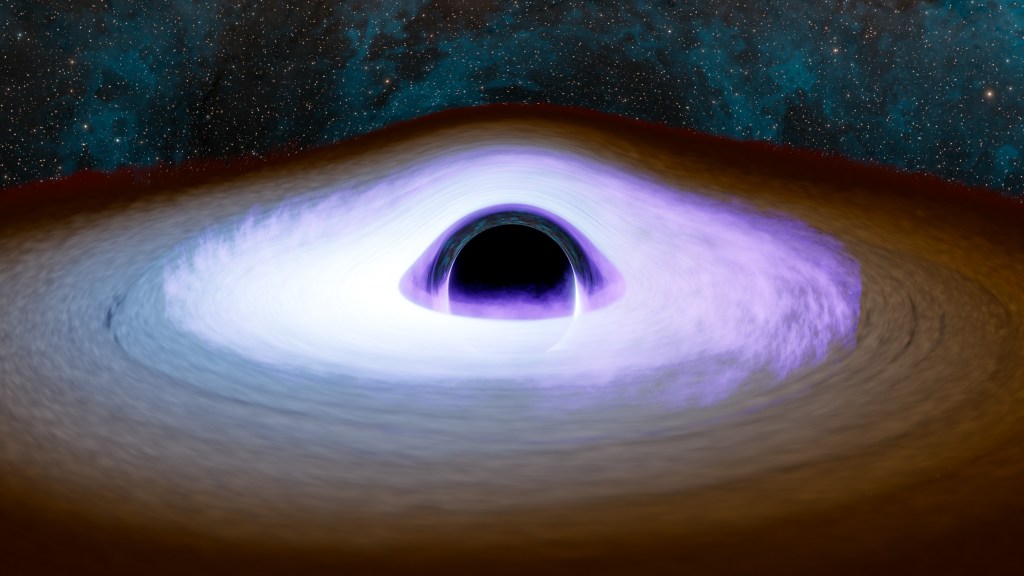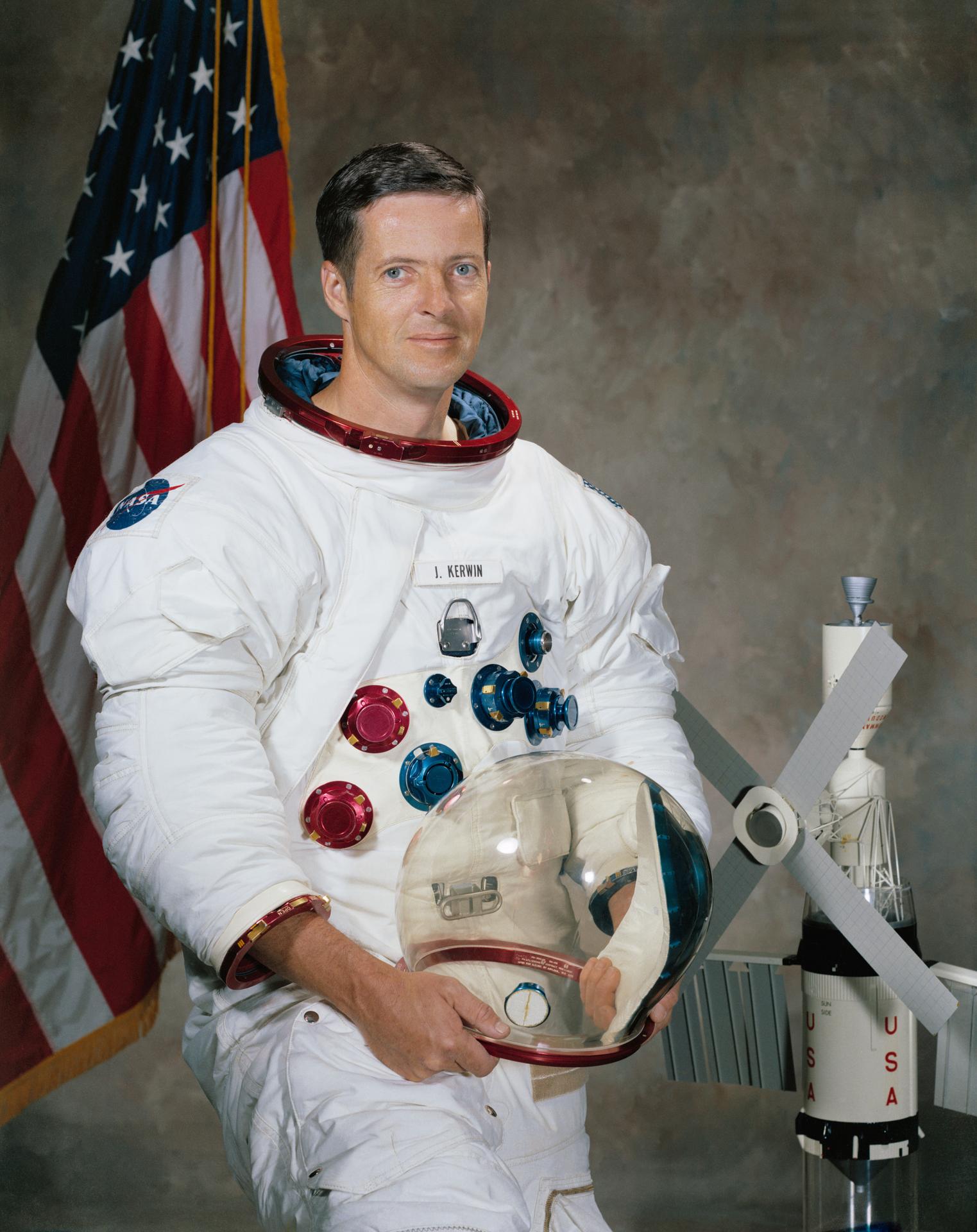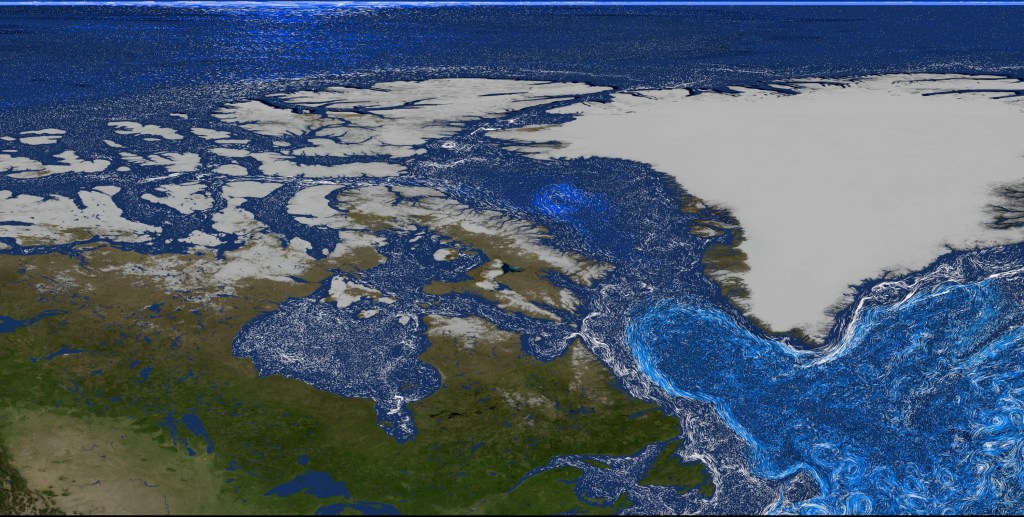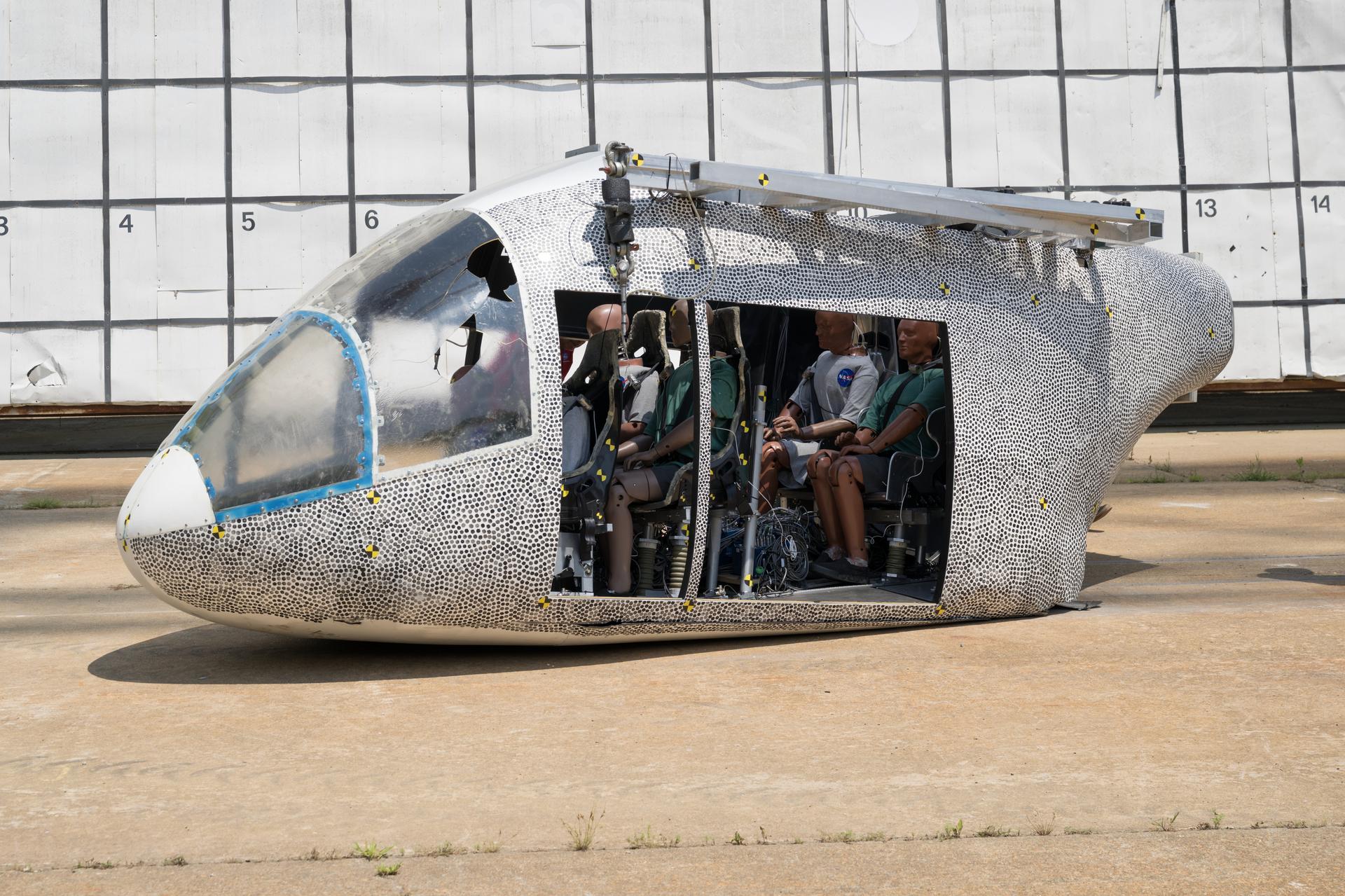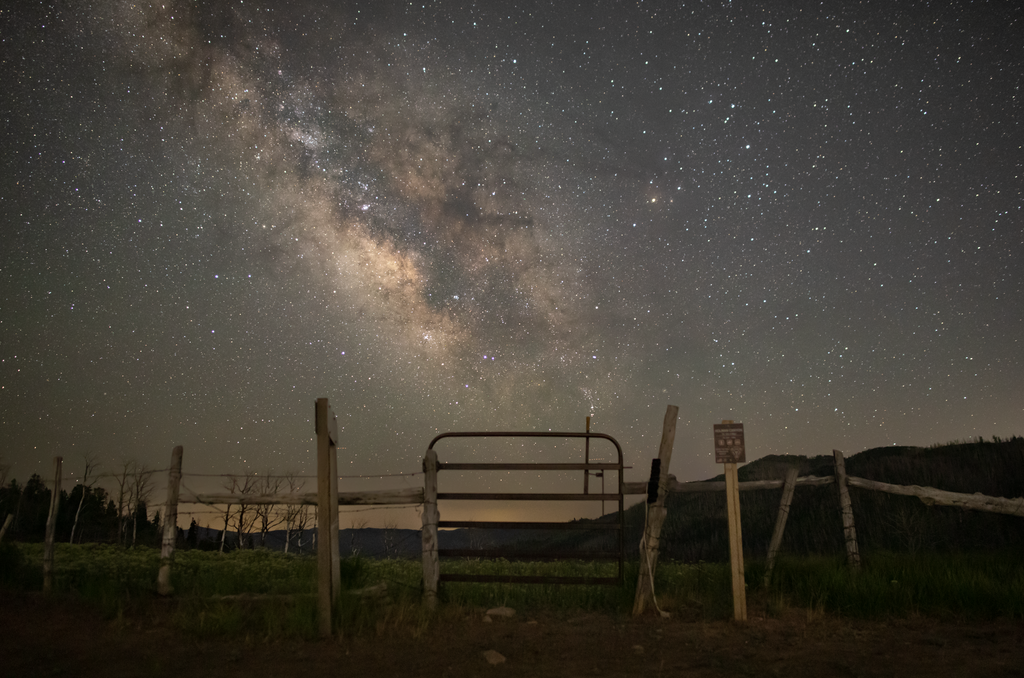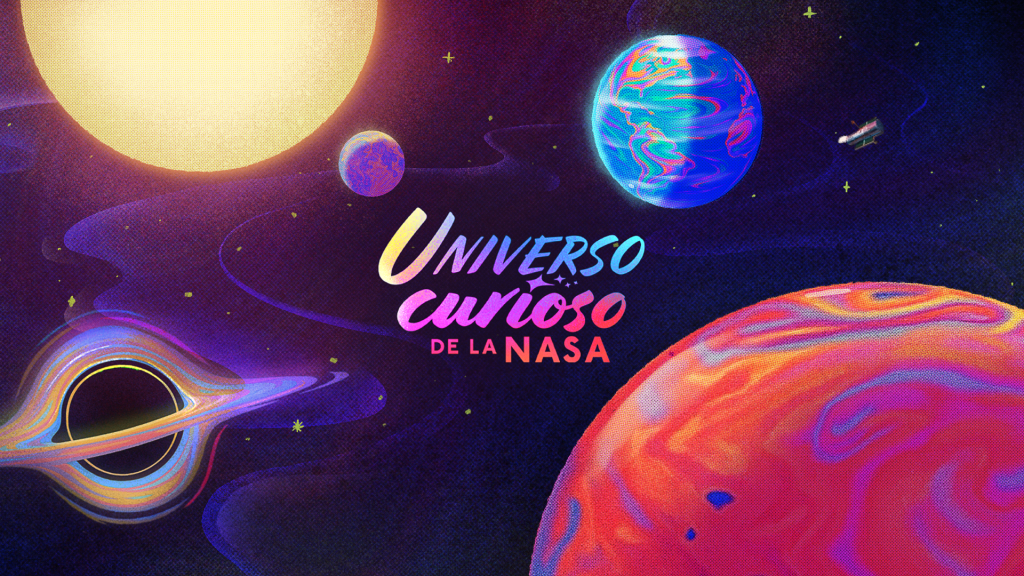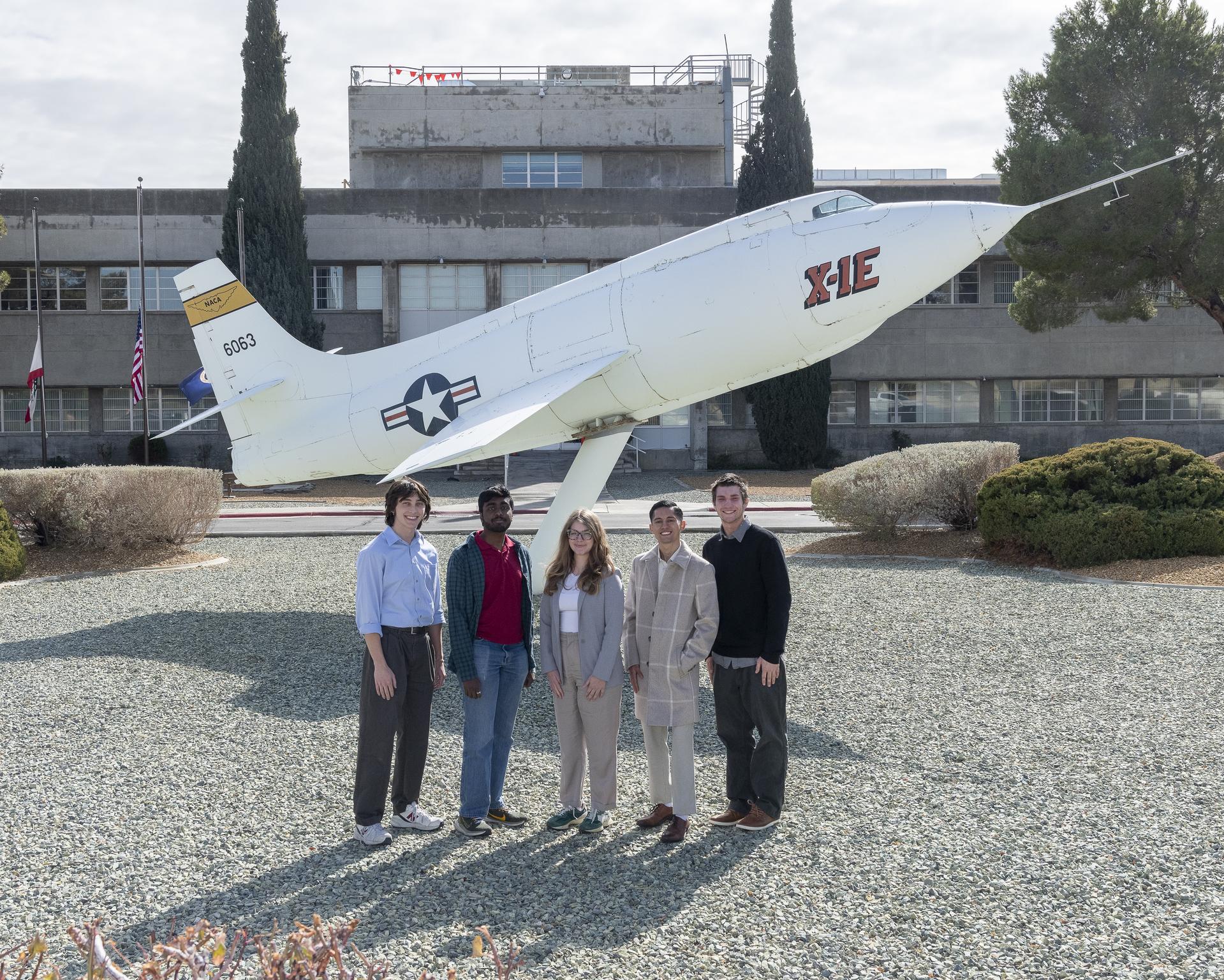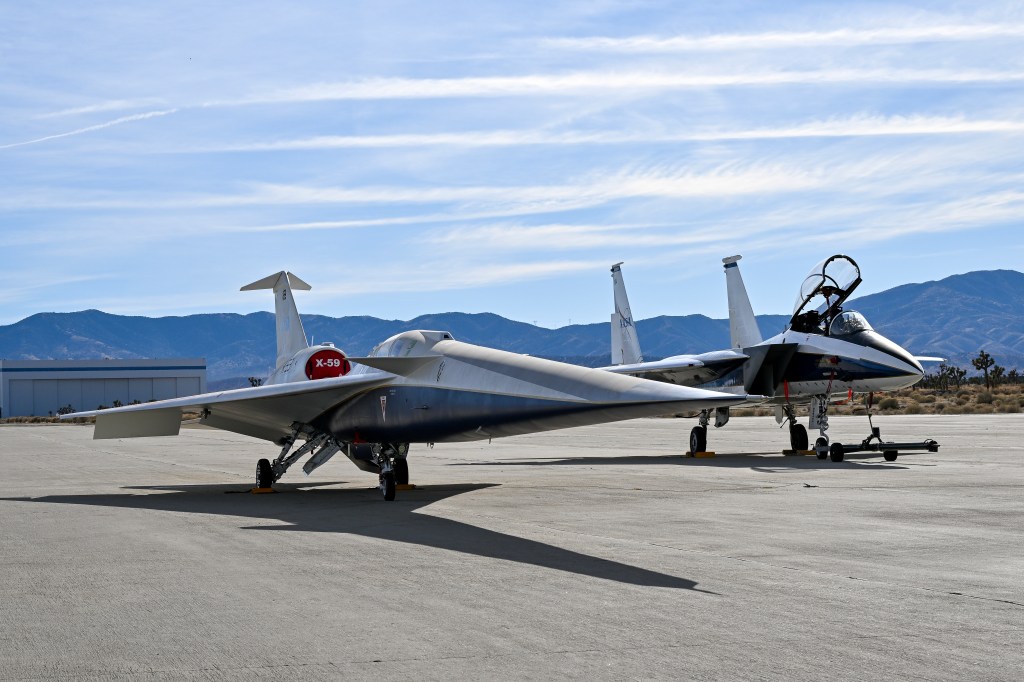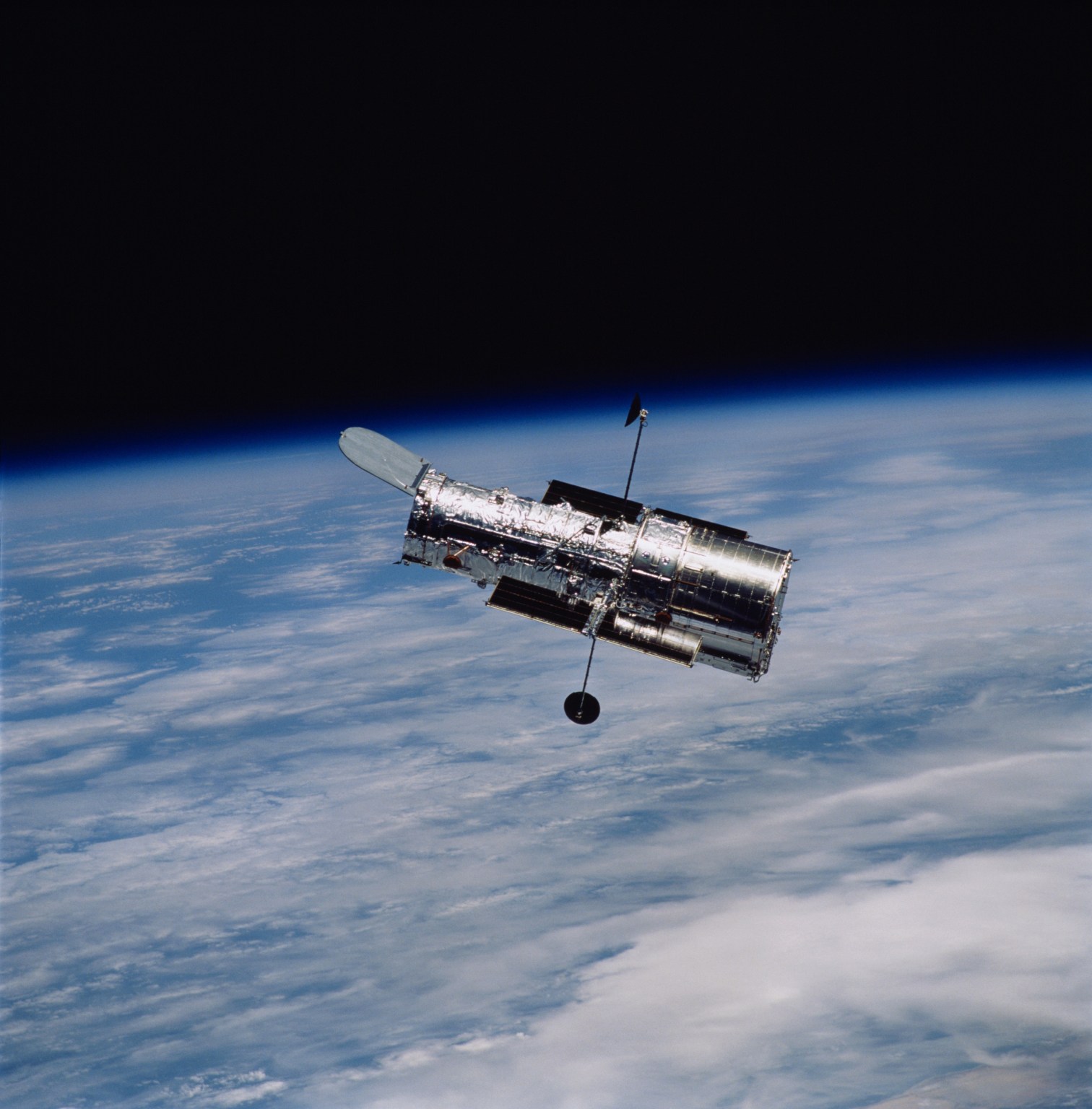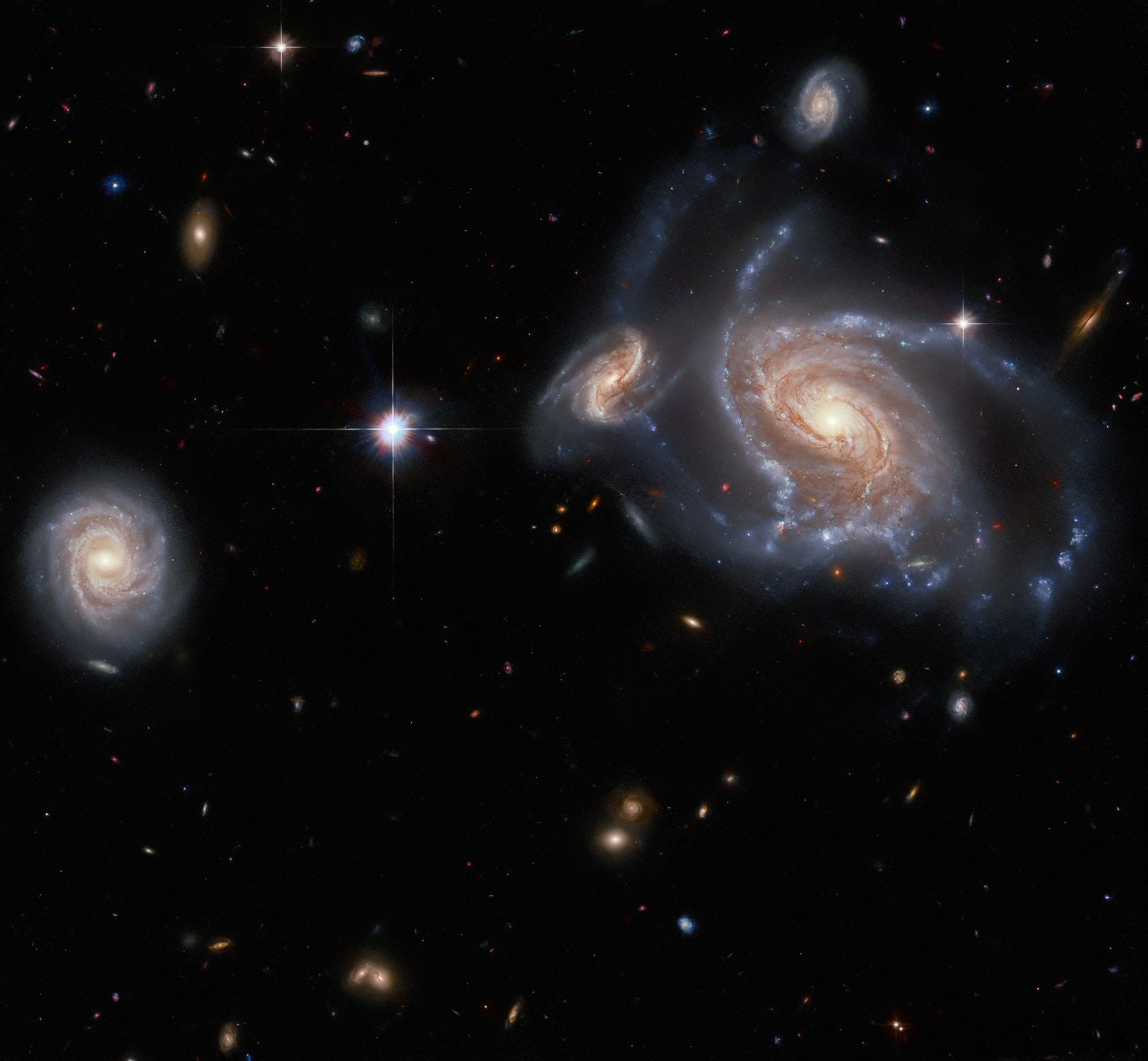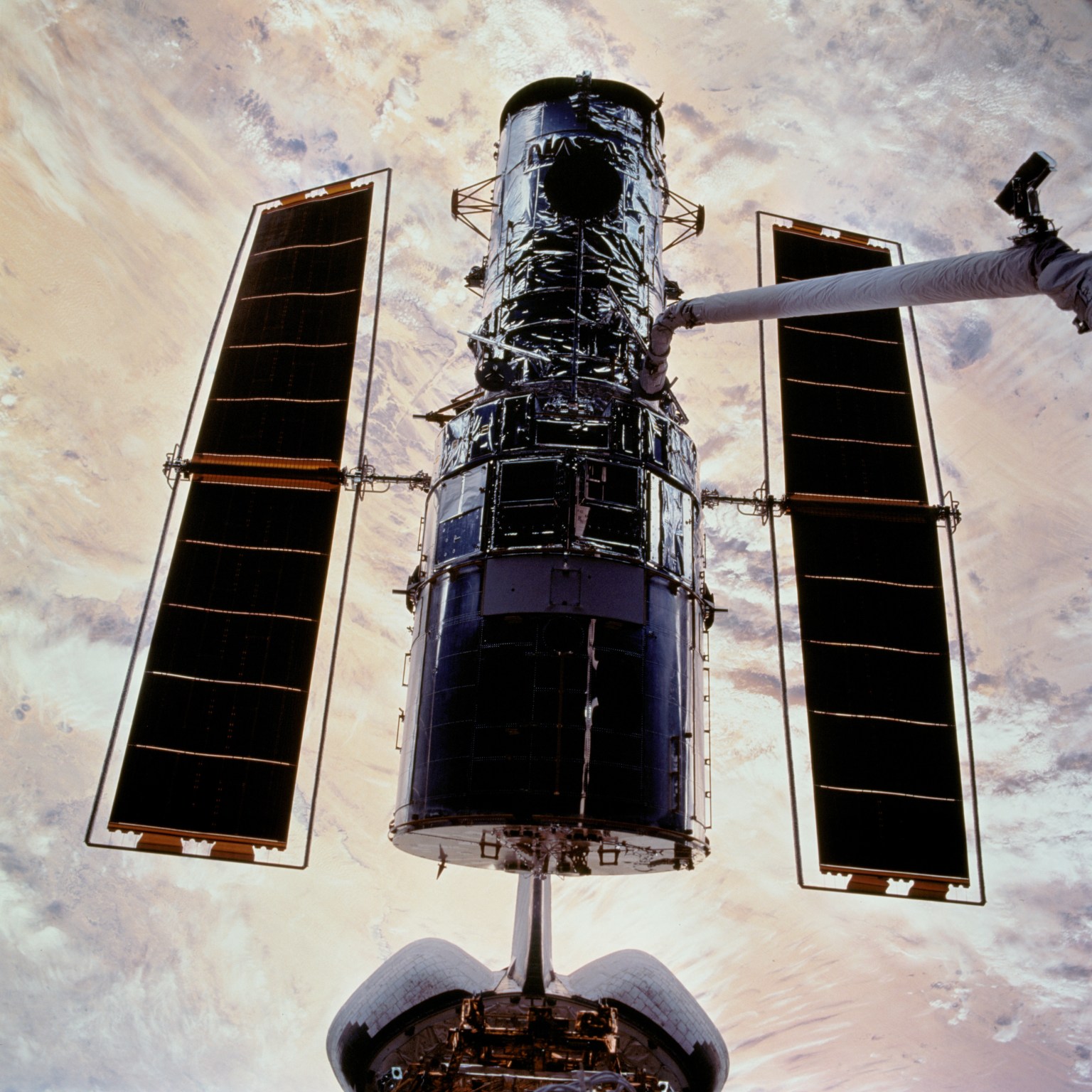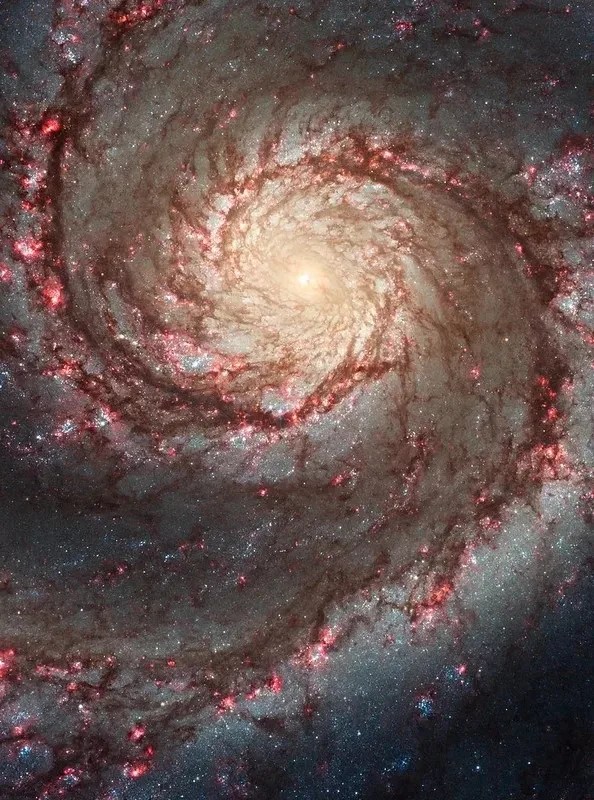We know that the universe is expanding. Astronomer Edwin Hubble, for whom the Hubble Space Telescope is named, discovered cosmic expansion in 1929, observing that the farther away a galaxy is from Earth, the faster it appears to be receding from us.
But a key question remains: what specifically is the relationship between how far away an object is and how fast it recedes from us? We call this value the Hubble Constant. Determining the Hubble Constant unlocks the answers to many fundamental questions, including the speed of the expansion (velocity is the Hubble Constant times the distance) and the precise age of the universe.
Observations by the Hubble Space Telescope pinned the Hubble Constant down with unprecedented precision, to an accuracy of almost one percent. This was a huge shift ― before Hubble’s launch and its refinement of the Hubble Constant, the age of the universe was estimated at anywhere from 9.7 billion years to 19.5 billion years. Afterward, astronomers using Hubble’s observations were able to pin it down to 13.8 billion years.
Hubble did this by observing distant objects like Cepheid variable stars and Type 1a supernovae that have known brightnesses. Because we know how bright they really are, we can measure how far away they are by comparing how bright they appear from our perspective ― similar to judging the distance to approaching headlights by calculating how bright they appear in the dark.

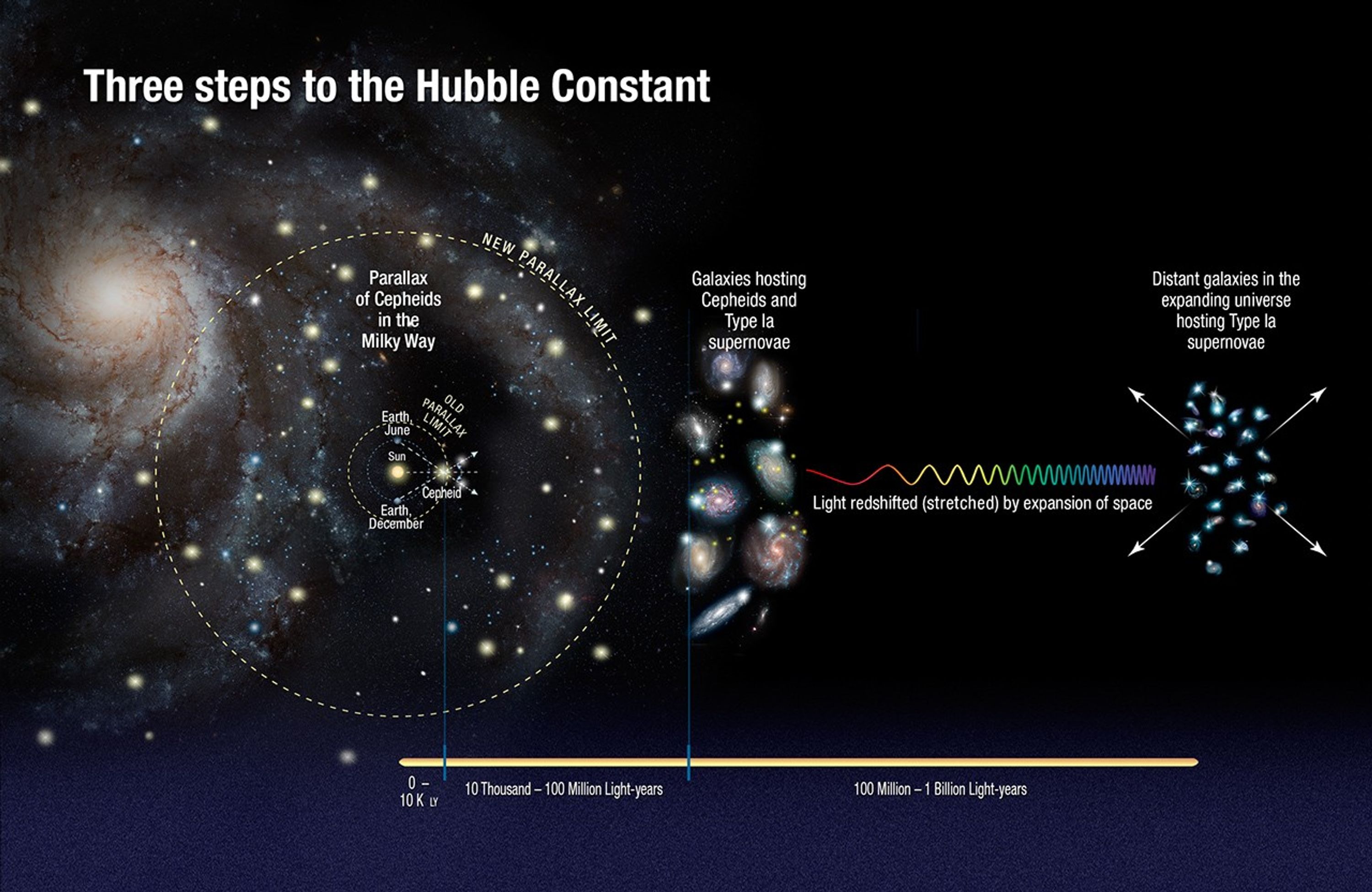
Beginning at left, astronomers use Hubble to measure the distances to a class of pulsating stars called Cepheid variables, employing a basic tool of geometry called parallax. Parallax is the apparent shift of an object's position due to a change in an observer's point of view. After calibrating the brightness of Cepheids using the nearby sample, astronomers measure Cepheids in galaxies farther away that also include another cosmic yardstick, exploding stars called Type Ia supernovae. These supernovae are much brighter than Cepheid variables. Astronomers use them as “milepost markers” to gauge the distance from Earth to far-flung galaxies.
They then look for supernovae in galaxies located even farther away from Earth. Unlike Cepheids, Type Ia supernovae are brilliant enough to be seen from relatively longer distances. The astronomers compare the luminosity and apparent brightness of distant supernovae to measure out to the distance where the expansion of the universe can be seen. They compare those distance measurements with how the light from the supernovae is stretched to longer wavelengths by the expansion of space. They use these two values to calculate how fast the universe is expanding now, a number called the Hubble Constant.
Hubble and Webb space telescope observations of objects like Cepheid variable stars and Type 1a supernovae give us measurements of distances to other galaxies. But it isn’t the only way to measure the Hubble Constant. Astronomers can also measure the cosmic microwave background (CMB), the first radiation to travel through space, which was released shortly after the Big Bang and is still detectable as a faint microwave radiation glow that fills the universe.
The problem is that the measurements by space telescopes of objects like cepheid variable stars and Type 1a supernovae, and the measurements of the CMB do not agree. Space telescope measurements find a Hubble Constant, or expansion rate for the universe, of around 70-76 kilometers per second per megaparsec (which gives an age for the universe of about 13.8 billion years). But measurements derived from studying the CMB provide a Hubble Constant of about 67-68 kilometers per second per megaparsec. Scientists call this discrepancy the Hubble Tension.
Today the Hubble Tension is still a mystery. Something may be wrong with our understanding of the early universe. Exotic particles, alternative theories of gravity, and early forms of dark energy are all proposed candidates for the difference. But it will take more research to solve the puzzle.

